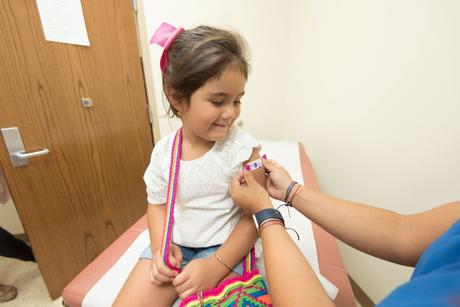A child’s annual checkup is one of the best ways to prevent serious medical problems before they start. Many children have no symptoms when something is wrong, so this visit allows doctors to pick up on potential future problems. But, of course, you can’t necessarily trust your kids to tell their doctor everything because sometimes they just don’t know what to say. That’s where parents come in.

As any parent knows, being there means being aware. If you are not present at every checkup, then you cannot be certain that your pediatrician has all the information necessary to treat your children should they ever become ill. At a minimum, it might be wise to take notes at each appointment so that you will remember important details if your kids are too small to give their own report.
The first step toward catching anything that might need attention is getting a thorough physical exam by a medical professional throughout all three major areas of concern.
These Areas Include:
Hearing Checkup:
The first test your doctor should perform is to check for any noticeable signs of hearing loss in both ears. Whether or not you can see it doesn’t matter; if your child exhibits the following symptoms, tell your doctor straight away: impaired ability to understand anything said at a distance (can’t always follow conversations), trouble understanding words when there are competing noises (i.e., in a school cafeteria or park full of children playing), or inattentiveness compared with peers.
Do some research to learn more about the standard screening procedure. It usually involves placing an otoscope into each ear canal and using it to play several different pitches (frequencies) while watching the eardrum to measure how much they vibrate at each pitch.
Eye Checkup:
The next test the doctor should perform is to carefully view each eye with an ophthalmoscope, checking for any telltale signs of certain conditions that you could have missed at home. The best way to do this is by dilating your child’s pupils, so they are fully open for the exam, as good lighting will help your doctor notice anything abnormal.
A comprehensive eye examination includes observing an image through direct vision and a magnifying glass on the opposite side. The doctor will test the pupil reaction to light, measure how closely together your child can focus their eyes (called “visual acuity“) by using special equipment to take pictures of the retina and optic nerve at the back of the eye and checking for any redness inside the eyes or on the eyelids.
Dental Checkup:
The last test your doctor should perform is a thorough inspection of all teeth; you can’t tell if there is anything wrong by simply looking in the mouth. However, certain conditions could make a huge difference in early detection: tooth decay (cavities) and gum disease (periodontitis).
If not caught soon enough, they can lead to serious problems such as heart disease down the road; this is especially common with people who experience Type 2 diabetes. So two screening tests are performed: looking for cavities and checking the teeth and gums for any signs of swelling or other damage due to periodontitis.
The first stage of gum disease is gingivitis, where there is some bleeding when brushing (or flossing), but not much else; if this goes untreated, it can advance to periodontitis where there’s a lot more bleeding, followed by loss of teeth and ultimately bone structure.
The dentist/hygienist should do their best to clean all your child’s teeth thoroughly (including underneath and between them)
In Conclusion
If everything checks out during the physical, then great! You can breathe a sigh of relief that your child is in good health. However, if something does come up, don’t panic. There’s no reason to worry unless you know there might be a problem and it hasn’t been caught yet; trust your doctor/dentist to do the best they can for your child.
They’re always learning new techniques to make things easier on everyone involved, from children who may get scared at the prospect of going to see “the doctor” or “the dentist” to adults who may get anxious when faced with their own mortality (i.e., aging).
The most important thing is getting familiar with how often you have checkups so that nothing gets missed. And it doesn’t matter whether you take your child to a pediatrician, family practice physician, or dentist; they will all perform the same basic procedures listed above. The only difference is that dentists are more likely to clean teeth and gums than other types of doctors (dermatologists and infectious disease specialists don’t tend to do this).
Hopefully this article helped you!
Thank you for reading!


